European race season is upon us, the National B road races, CTT time trials, IRONMAN Triathlons and World Tour stage races have hit Europe and according to our data – you’re all using myWindsock to prepare. As you’re doing it anyway, we thought we’d go through how we, here ay myWindsock, use the app to get ready for events that we’re doing. This will be quite comprehensive and will go over the following:
- Course recon
- Duration predictions
- Pacing plans
- Fuelling
Running the risk of being self indulgent, I’ll base the contents of this piece on a course that I’m doing – namely the bike course at the Peniscola Infinitri Triathlon – my first race of the season.
Course recon
Unfortunately, we don’t all have unlimited money and time so can’t often recon a course in the flesh – but myWindsock is the next best thing for it. It allows us to review the terrain, weather and their combination.
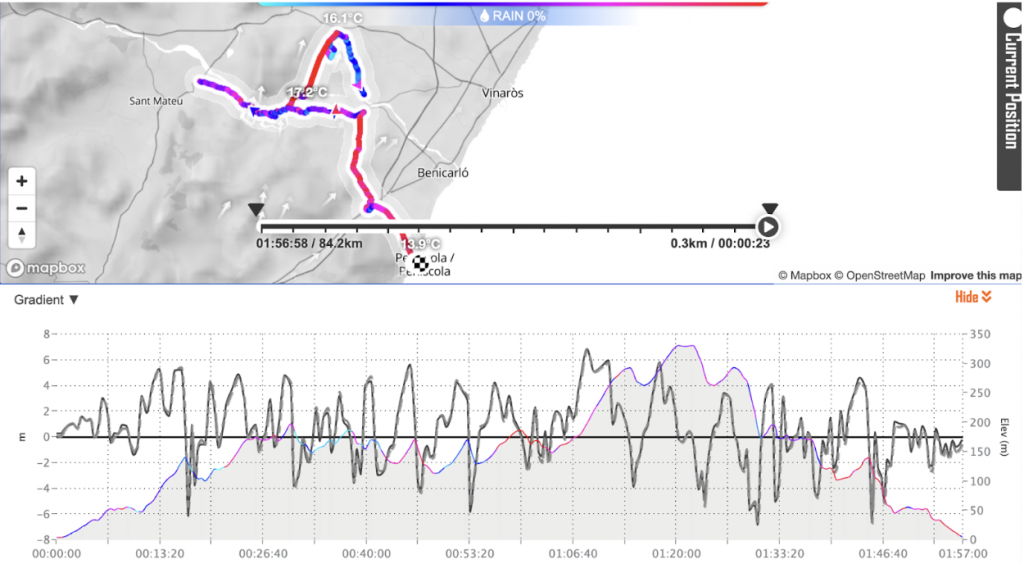
The plot above shows the gradient as a function of time, which is typically where I like to start. This allows me to think about gearing on a high level and decide between a 1x and 2x chainring set up. For this race, it’s on the cusp but I prefer to pay the aero penalty rather than running the serious risk of being undergeared so I will use a 2x chainring.

Predicting duration
In order to predict duration I do a worst case scenario and best case scenario which to me, looks roughly as follows…
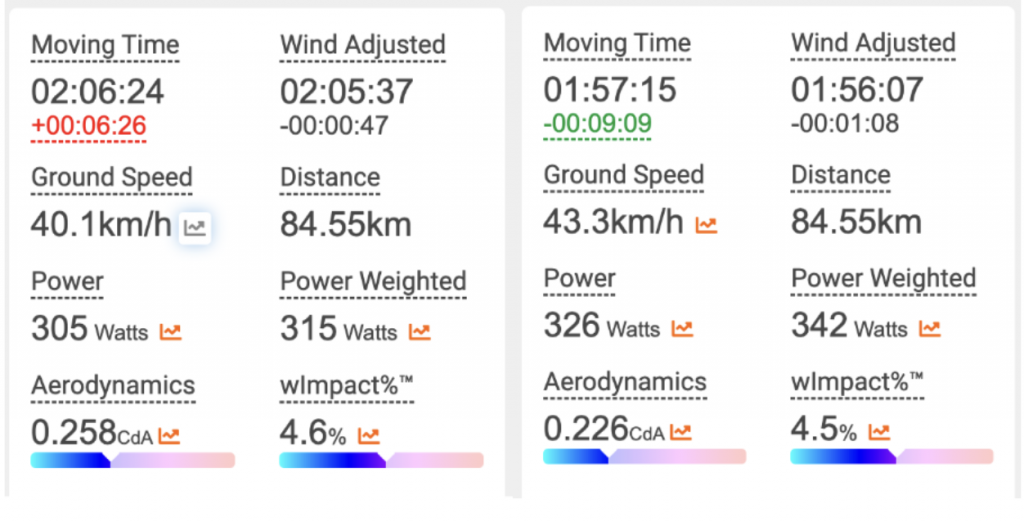
From this we can see I’ll be around the two hour mark plus or minus a couple of minutes depending on how I feel. You’ll notice a wide cda range as well – this is because on a bad day I also typically sit up a bit more and shift around on the saddle. With these constraints we can come up with a pacing plan and look into the course demands.
Pacing plans

Firstly we can look into the distribution of speeds and we can see it’s a very wide range – we spend a lot of time under 30 kph, so we will look to minimise this by going harder and setting a rule that if we are under 30 kph, we’ll do 400W, if under 20 we will sit up and do 450W. To balance this out, we’ll also stop pedalling over 55 kph. Let’s see how this impacts a middle case scenario (remembering that in triathlon we are looking to balance going fast with saving energy for the run).
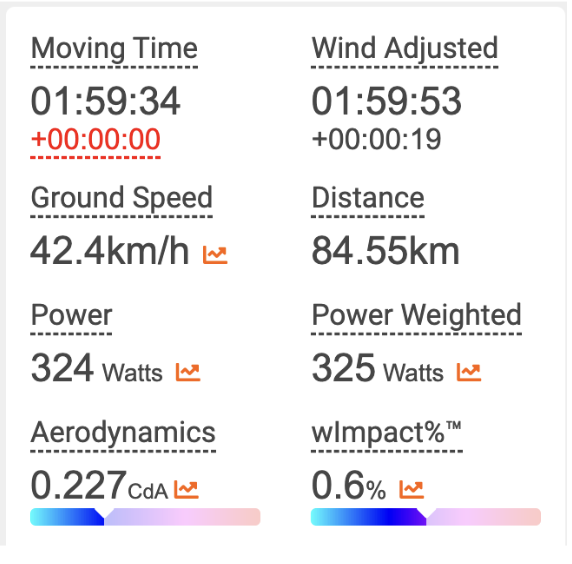
The above case is without the aforementioned pacing rules, and with them we get…
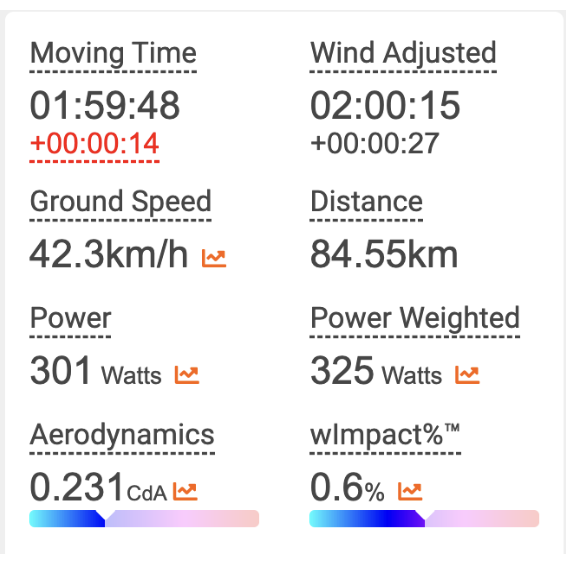
We notice it’s actually 14 seconds slower (probably within the margin of error). Changing out the speed at which we stop pedalling from 55 to 65 kph adds 20W to the average power and saves 2 minutes over the course of the event. This information allows me to make better decisions during the race, if I want to behave aggressively I know what the time savings for going hard on the descents are and I also am fully aware of the energy penalty I’ll pay for doing this.
Fuelling planning
We need to plan to consume 2 hours worth of fuel for this race, which for me is around 240g of carbohydrates, 1000mg of sodium and around 1.5-2L of water. Now, we don’t want to be eating when going full gas and we can use dips in the power profile to think about when we’ll likely be able to get some food in. Around 15 minutes, 40 minutes, 50 minutes etc. I’ll have the chance to take a gel or a sip. Also, looking at this tells us the first 15 minutes is likely to be pretty full on so maybe a gel in transition would be wise.

This blog gave us just a brief insight into some of the tools available in myWindsock for planning performance but it was by no means exhaustive. To prepare for your next race and leave no stone unturned, sign up to myWindsock here.

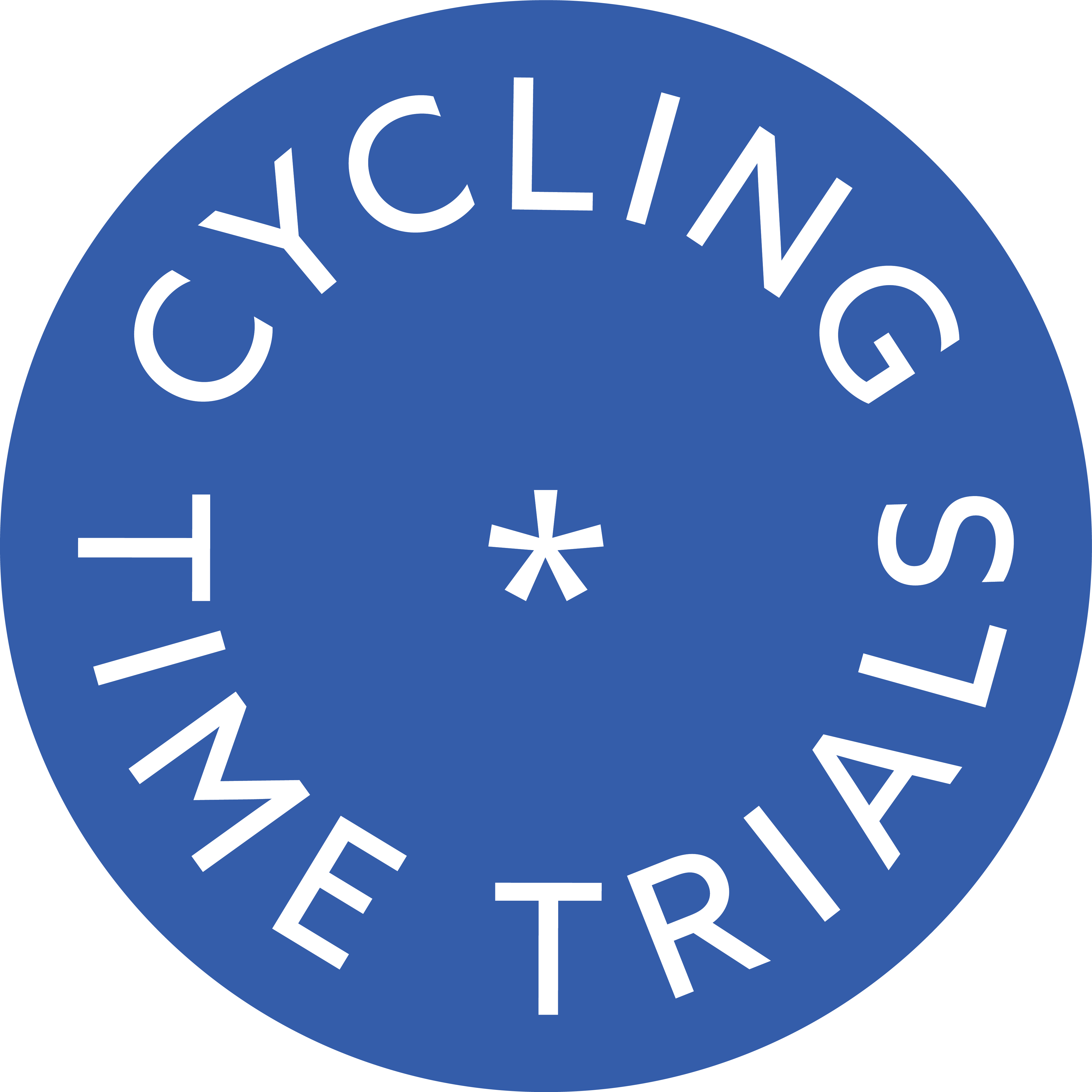 UK Time Trial Events
UK Time Trial Events




